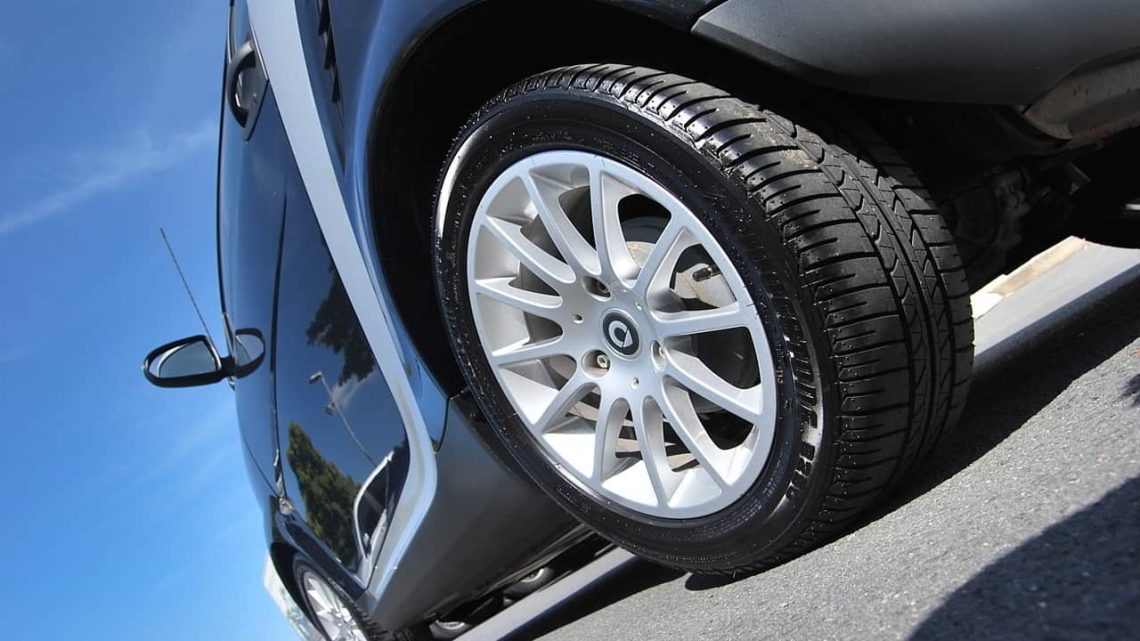There are numerous reasons for switching your vehicle’s tires. It might be due to unavoidable wear and tear because no matter how much you care for your vehicle, even the top quality tires will wear out sooner or later. Regular maintenance can no doubt prolong their life but they still need a replacement after a certain time. Hence, a tire size guide is crucial to choose the right one for your vehicle.
You might want to change your tires to alter the look of your car. Getting them trendy tires is all you need to have that perfect exterior you always wanted for your car. Or if you want better performance, look for tires that will cruise you smoothly on the road with your desired stability and hold. Buying the right tires is pretty simple.
Table of Contents
Here is a full demo on how to interpret the numbers and letters to make the right choice of wheels for your best buddy: your car.
The Right Size of Tires for Your Vehicle
Safety Check
The NHTSA reported 562 total automobile traffic fatalities in 2022 due to tire related crashes
Once you decide to buy tires for your car the first step is to find the right type of tires for your vehicle. Consult your owner’s guide manual to get all the information about the perfect tire size for your car to ensure a safer driving experience. Having the right guide will make it easy to find the best tire size for your car.
All the information about the tire is available on the side walls. But if you are new to the gigantic world of vehicles you might find it a little hard to understand the terms used on the sidewall of your wheels. They tell you about the size, shape, capacity, and design of the tire through letters and numbers. These sizes represent the type, width, diameter, speed rate, load index, and tire construction type.
The Type of Tire
There are several types of tires for different types of vehicles. They can either be “P” or “LT” or no letter. These are usually the first to appear on the side wall. They indicate the class of vehicles they are designed for.
Tire Type “P”
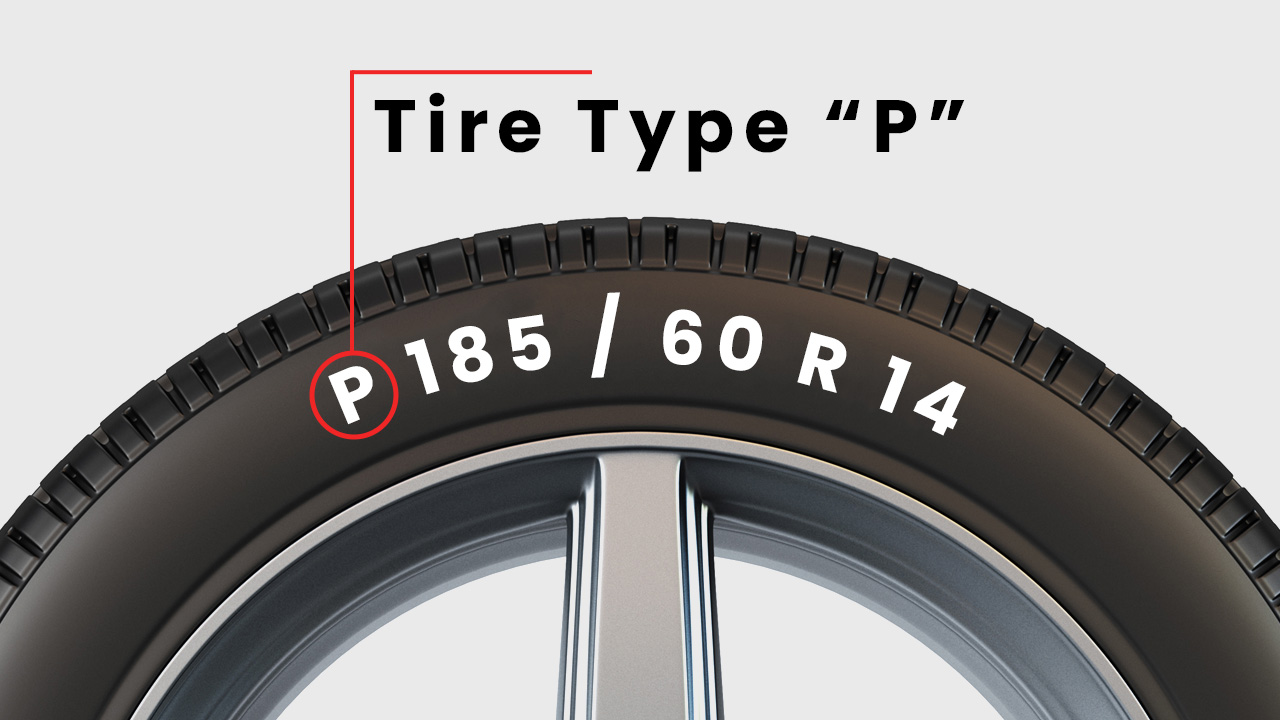
The letter “P” stands for passenger tire. These tires support lighter vehicles like sedans and crossovers etc. They are used for family cars and are not designed for rough roads or heavier loads. These tires navigate well on dry and wet roads and offer calmer, smoother, and more comfortable rides. They do not provide much resistance against rough bumpy roads.
Tire Type “LT”
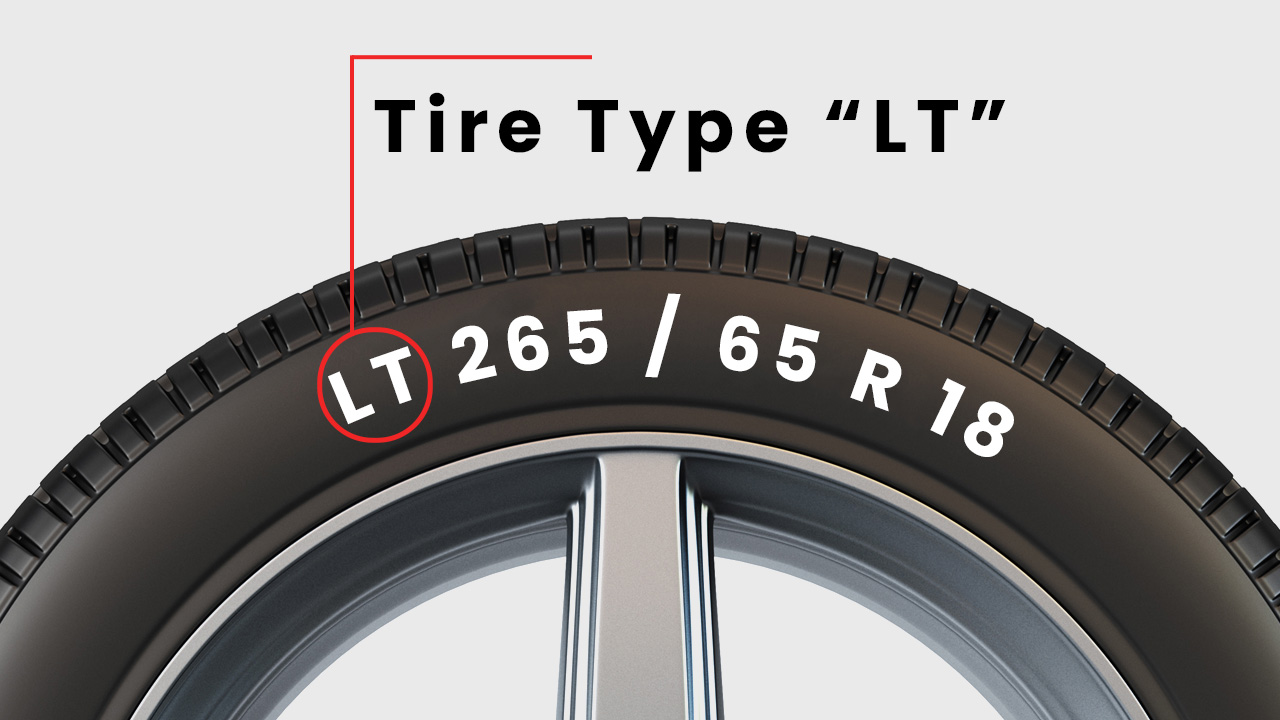
“LT” stands for light truck. These tires are for heavier vehicles like SUVs etc. They are good for rougher off-road terrains being more firmer and stronger and therefore more resistant against wear and tear. The LT-metric tires are only suitable for heavy duty and can become a nuisance if use them for daily commute. They consume more fuel if used on a smoother road for day-to-day activities. The ride can be uncomfortable, rough and noisy too.
Tire Type “C”
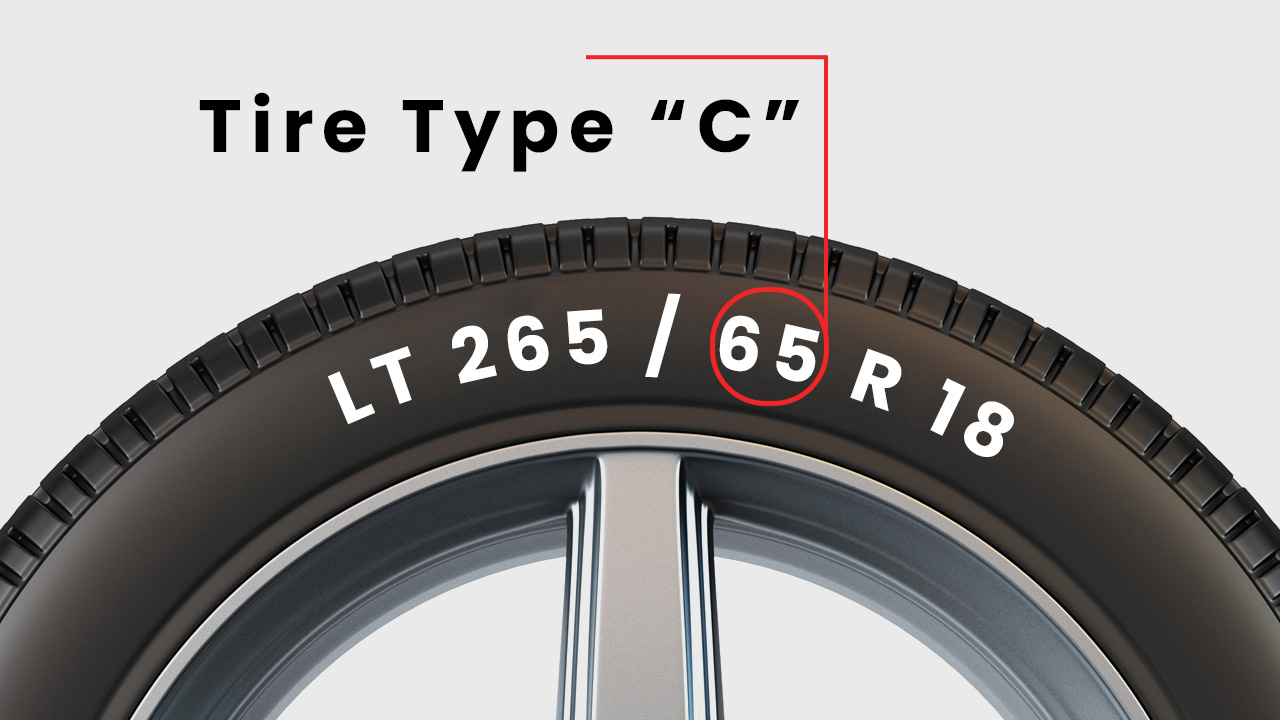
The commercial tire, type C are for carrying heavier loads for commercial purposes like cargo etc. These tires are capable of holding heavier load than the LT.
Tire Type “T”
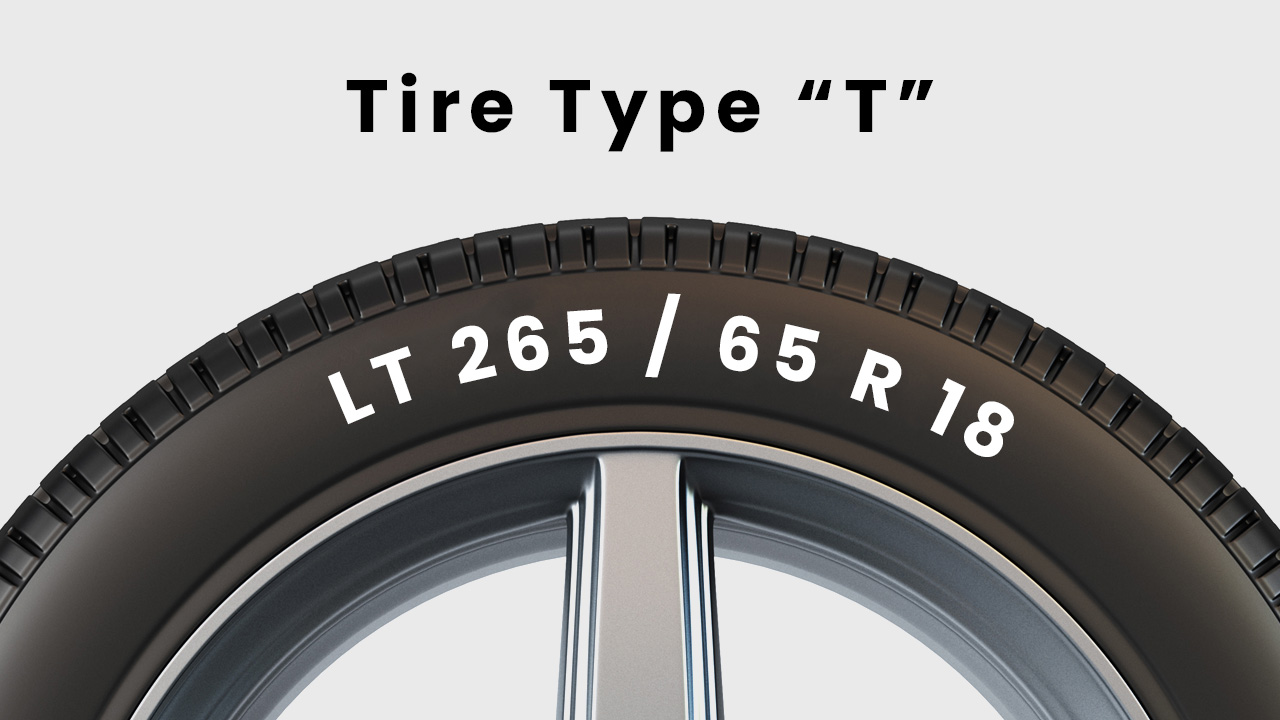
Temporary tires are smaller tires which we use as spares. It is also refer to as a donut due to its tiny size. It is a temporary solution for a flat tire dilemma in the middle of no where. However, the different tire size makes the ride significantly uncomfortable. And should be replaced as soon as one can.
HL
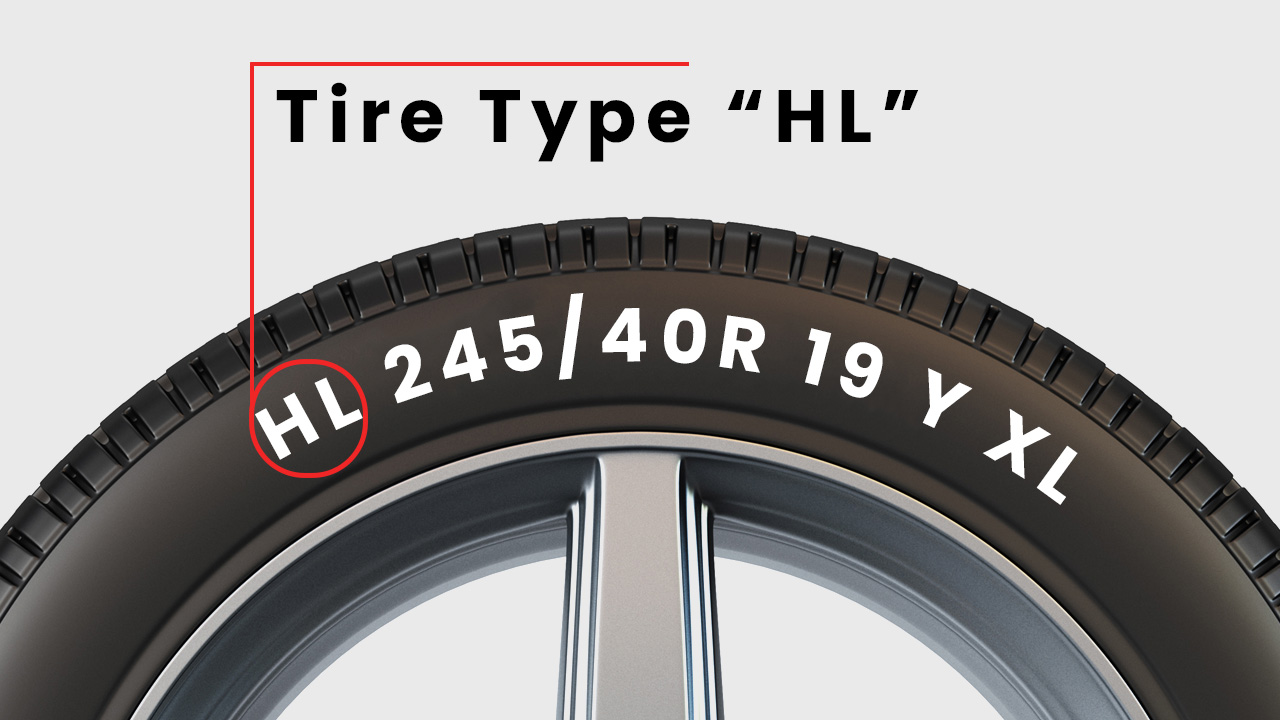
“HL” stands for high load capacity tires. These tires can carry heavy vehicles. The HL tires were introduced only a couple of years ago. They can carrier heavier loads than XL. Being able to support heavy vehicles does not mean a bigger tire. These tires have the same size and the amount of tire pressure but they offer a bigger load capacity than the XL tires.
HL tires are usually for electric and hybrid vehicles. They meet the increasing demand of customers for tires that can support cars with heavy batteries. They play a crucial role in enhancing the range by saving energy through regenerative braking and by lowering rolling resistance. The high-load tires offer extra support but do not compromise the comfort of your car. They are designed to handle loads smoothly and stand strong against wear and tear. HL also comes in handy for cars that are heavier but do not have space for bigger tires.
Reinforced or XL Tires
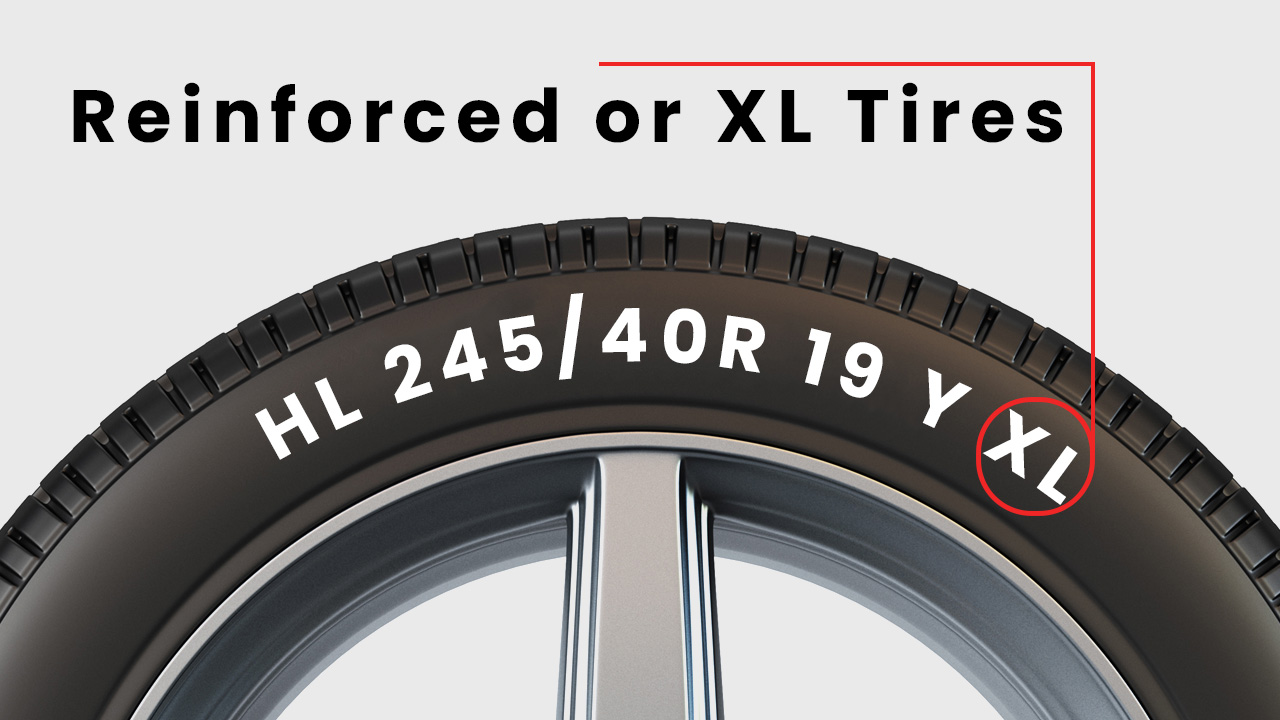
Reinforced or XL tires are extra-load tires because they can carry higher loads than an SL, Standard Load tire. These are for heavy vehicles like the SUVs. An example of an extra load tire is a BMW X2 M35i.
Width
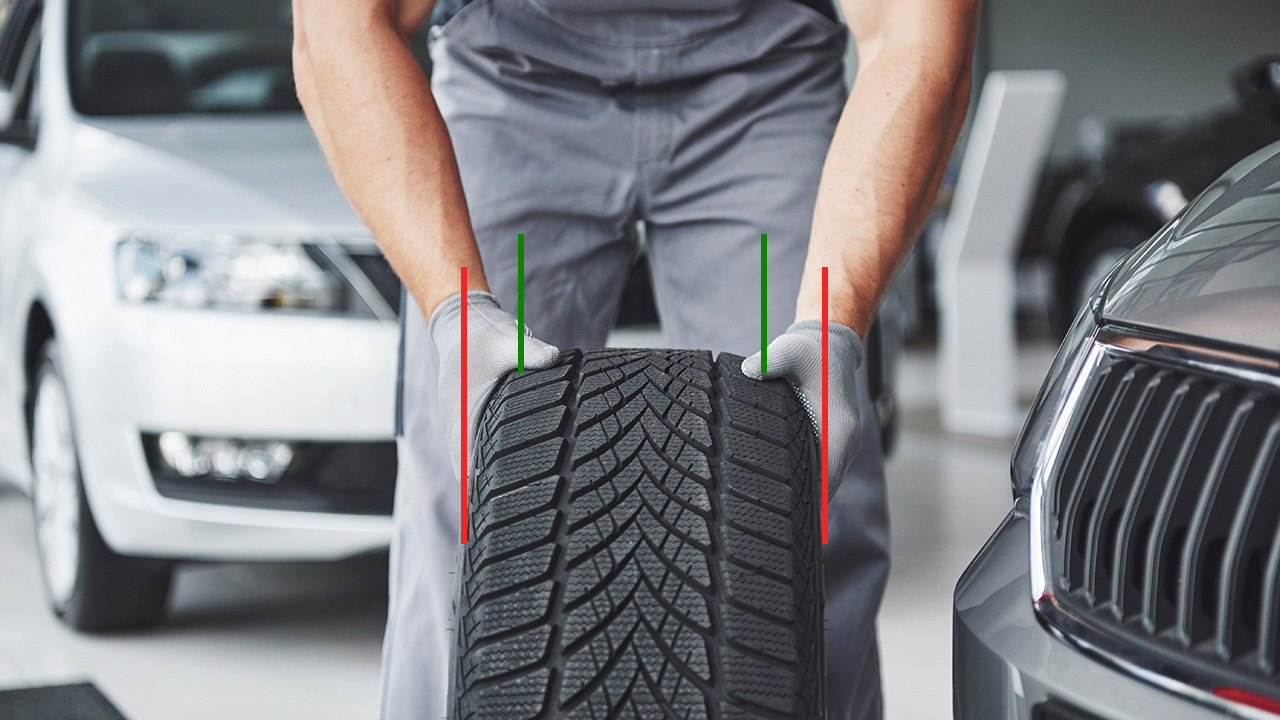
Fact
All the tires in a vehicle have the same width.
Next comes the width of the tire. The type denoted by an alphabet usually, is followed by some digits. To understand the width of a tire it is important to know that wheels and tires are not the same. Wheels are the rims while tires are the rubber part that fits over the rim. The width of the tire is crucial for the high performance of the vehicle.
The perfect type and size give the car a classy exterior. But it does not exist for aesthetic purposes only, it also enhances the vehicle’s efficiency. Choosing the wrong width can be risky. The width is measured from one sidewall of the tire to the other. An example of how to read the width of a tire is “P225” The P means that the tire type is passenger and it has a 225-millimeter width.
Aspect Ratio
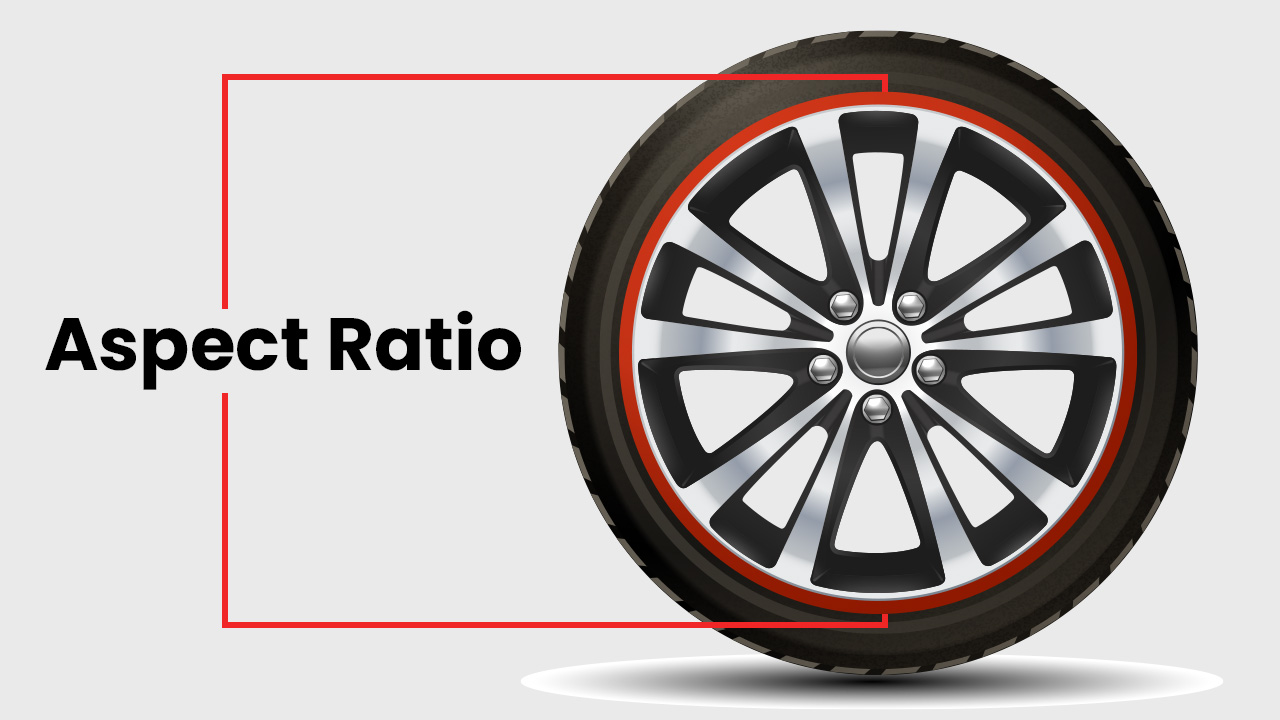
The aspect ratio is the height of the tire in percentage. Divide the height of the side wall by its width and the result will be the aspect ratio of your tire. The type and width of the tire are followed by an aspect ratio like “P225/70”, which means that the sidewall is 70% of the 225mm width.
The Construction
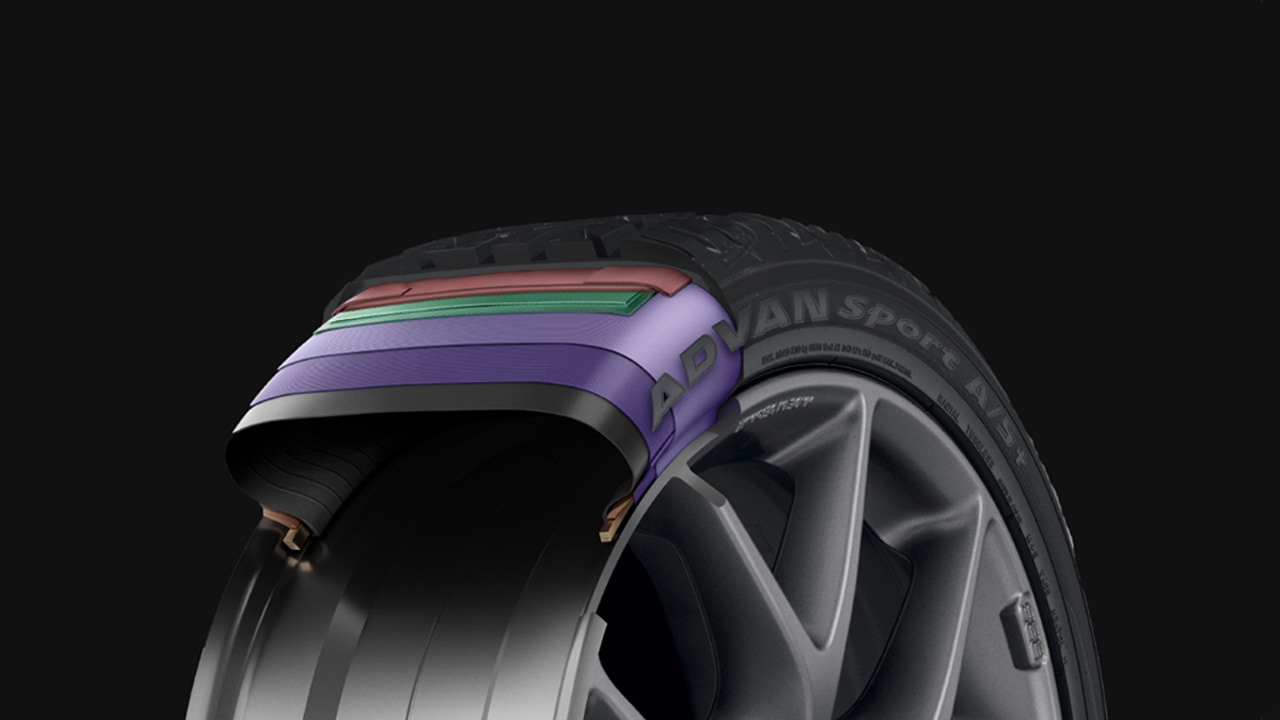
After the aspect ratio, the construction of the tires is there. It is written like this “P225/70R” The “R” here means that the tire is a radial. The construction tires can either be biased, radial or solid, as follows;
1. Radial
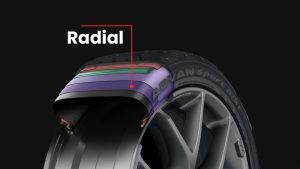
Radial tires are constructed with a steel cord Radial tires do very well on longer routes like highways.
They are more resistant to wear and provide better stability. They are also more fuel efficient.
Though they are more expensive than bias tires they last longer too which compensates for the price.
2. Bias
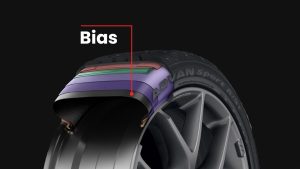
The bias tires are made of rubber plies, at 30 to 40 degrees, in the intersecting pattern.
The thick, angled plies give the tire strength and stability to carry heavy loads from one place to another.
The bias tires provide a smoother tread off-road and these tires support vehicles like trucks for commercial or agricultural purposes.
3. Solid
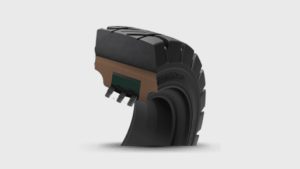
Solid tires are for industrial use and do not work well under high speed. As the name suggest it does not use air.
Because of its construction, these are resistant to tire damages like puncture etc. They carry very heavy load than all the other kinds.
Though they are expensive to buy, they are also low maintenance and have a long life.
Rim Diameter
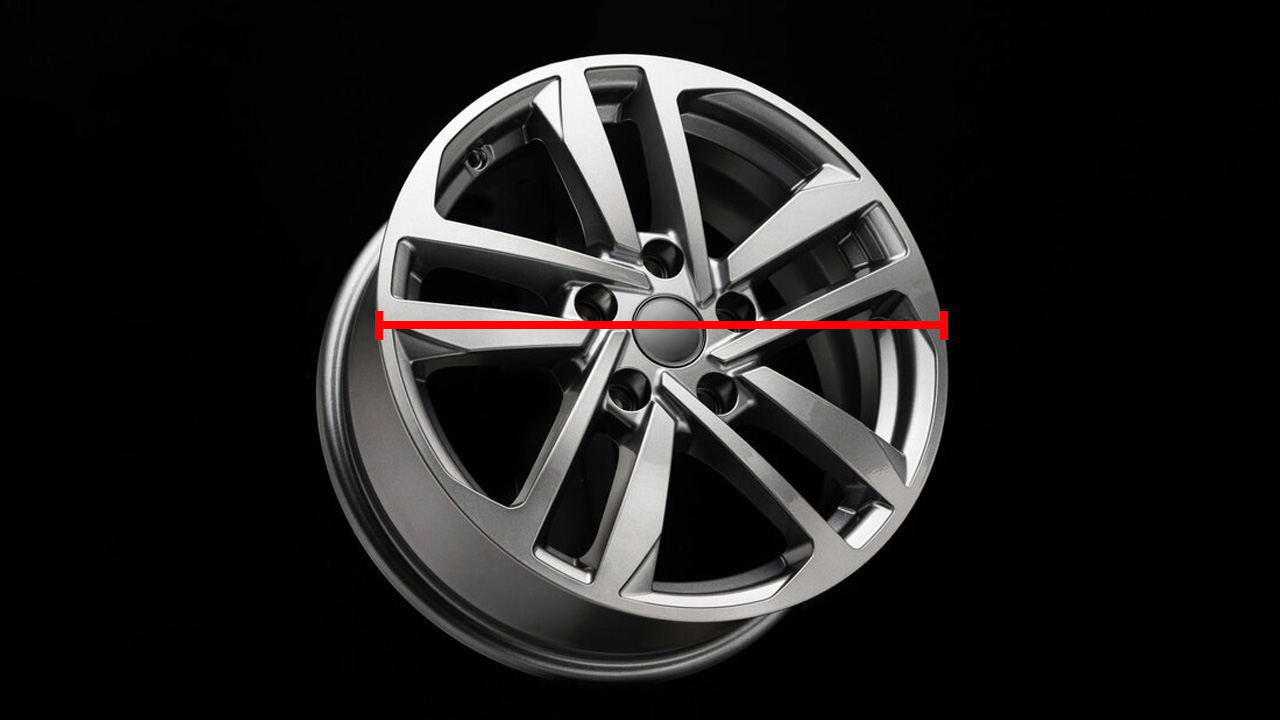
The construction is followed by the rim diameter. The diameter of the rim usually is 14, 15, 16, 18, 19, 20, 21, or 22 inches. Each rim size requires a specific size of tire and not all tires fit all sizes of rims. It reads something like this “P225/70R16”. The number 16 is the diameter of the rim in inches.
Load Index
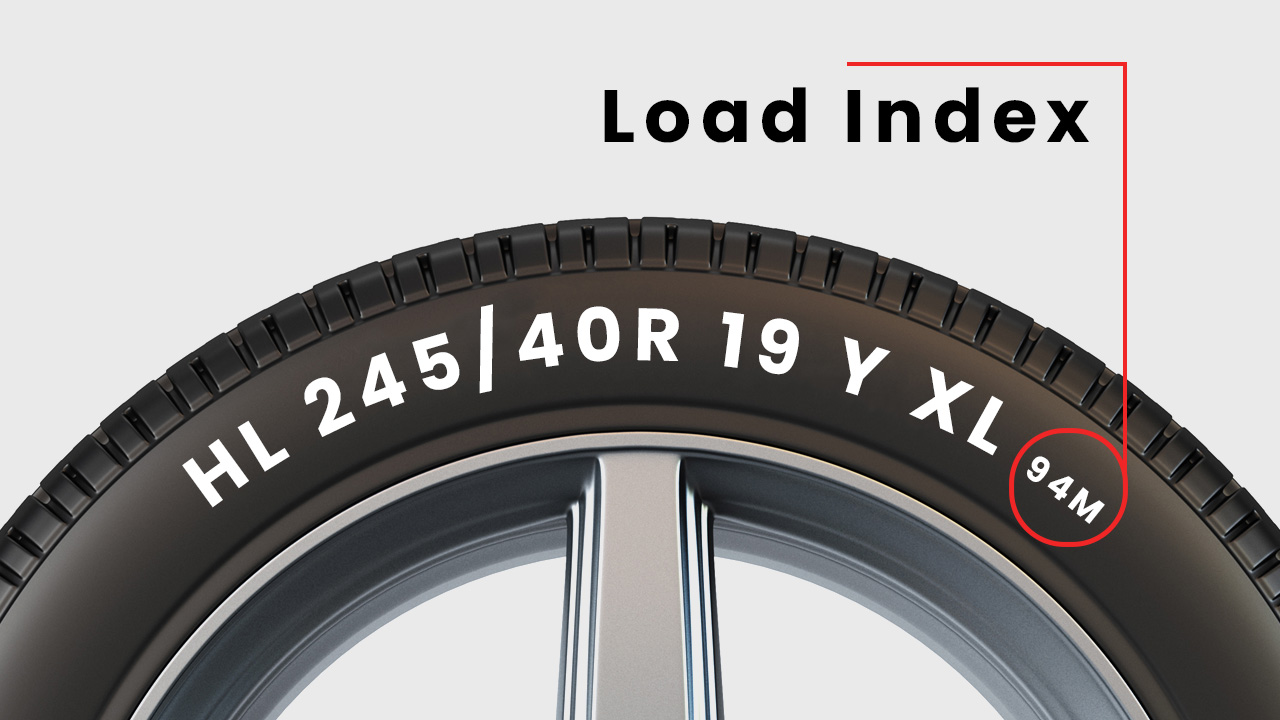
The next number indicates the load index. It shows the maximum amount of weight the tire can carry. Legally the load index is not something we need. So, it comes after the rim diameter and reads like this ““P225/70R16 91”, 91 here indicates the load index.
| Indicating Letter | Max. Load Carrying Capacity |
|---|---|
| Q | 99mph |
| R | 106mph |
| S | 112mph |
| T | 118mph |
| U | 124mph |
| H | 130mph |
| V | 149mph |
| W | 168mph |
| Y | 186mph |
| ZR | 186+mph |
It makes it easy for customers to compare different tires based on their weight capacity and avoid the risk of overloading their tires. In order to find out the right size of tires refer to this guide chart to find the maximum load-carrying capacity of each tire, multiply the load by the total number of tires, that is four. If the resultant number is higher than the gross weight of your vehicle the tires are right for your vehicle.
Speed Rating
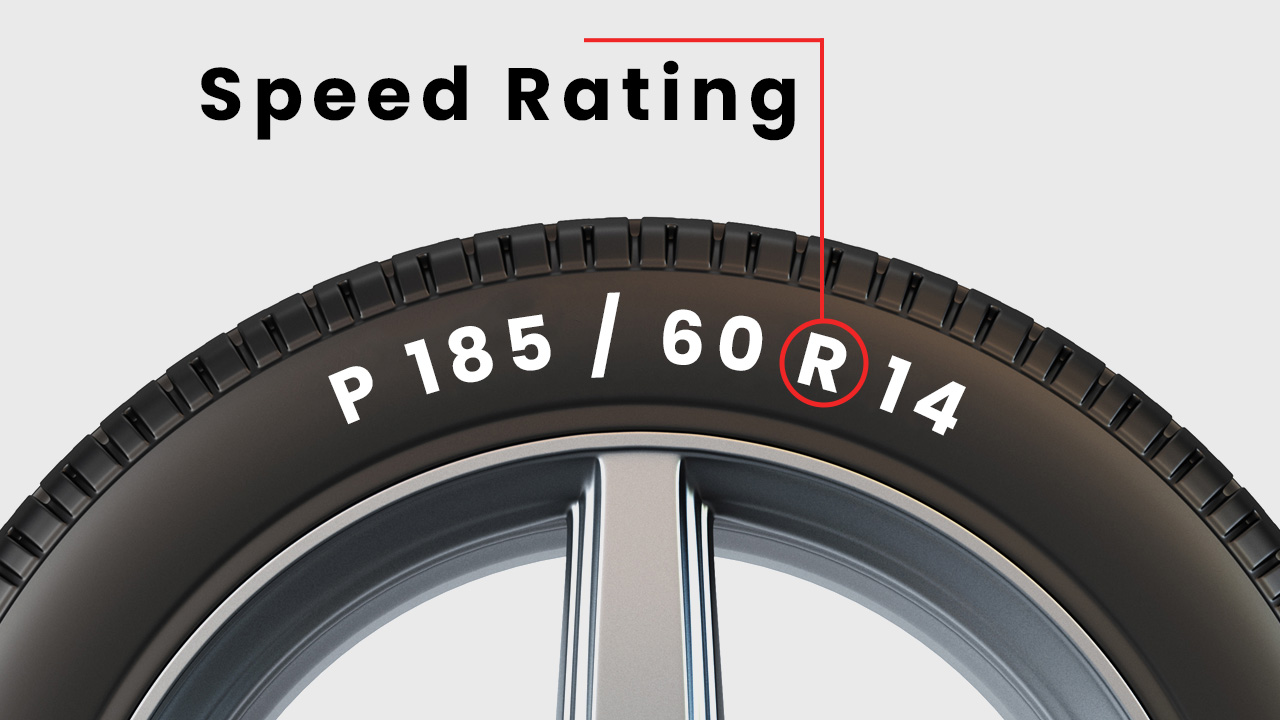
The speed rating is the maximum speed limit a tire can handle. The speed limit signified by different letters indicates the intensity of speed for example the letter Q on the side wall means that the tire can handle a speed of 99mph, and the letter R suggests that the maximum speed limit for the tire is 106mph, and so on and on. Always keep in mind the legal speed limit in mind while driving at a high speed.
The Dot Sign
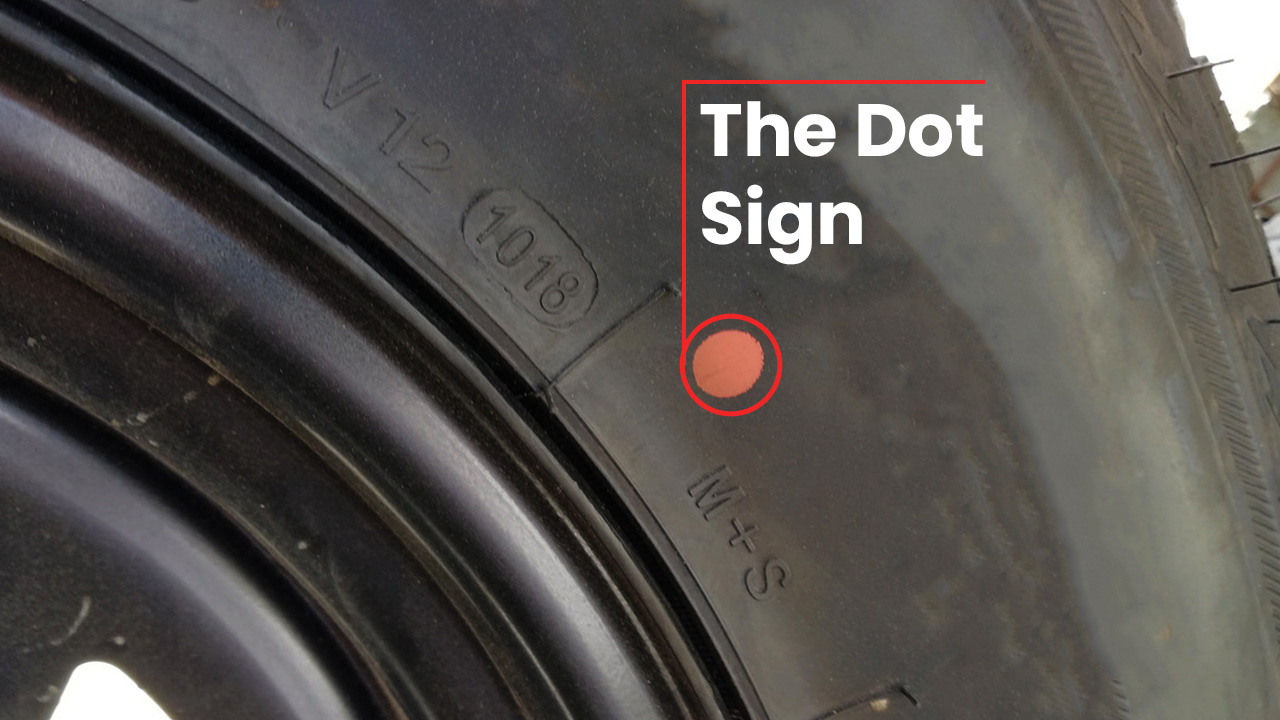
The DOT stands for the US department of transportation. It indicates that the tire follows all the federal motor vehicle safety standards.
Tire Identification Number
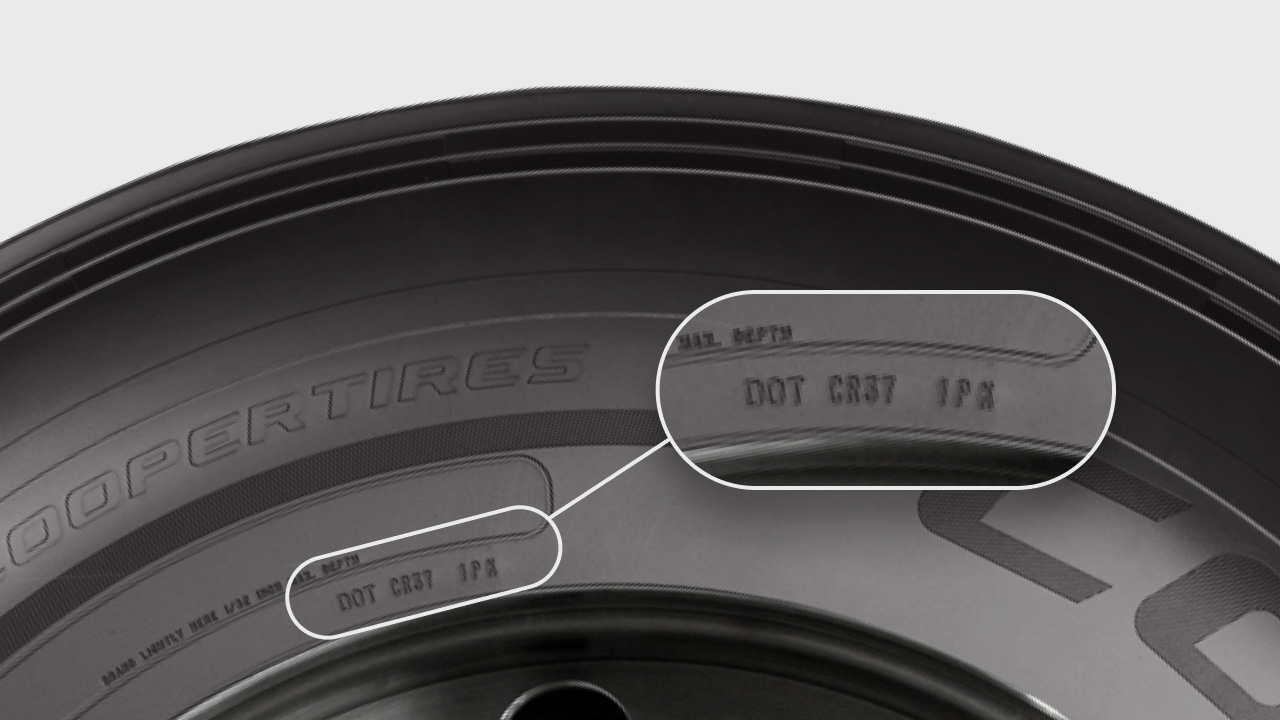
The identification number of the tire carries information about the tire’s manufacturing date and location.
Uniform Tire Quality Grading
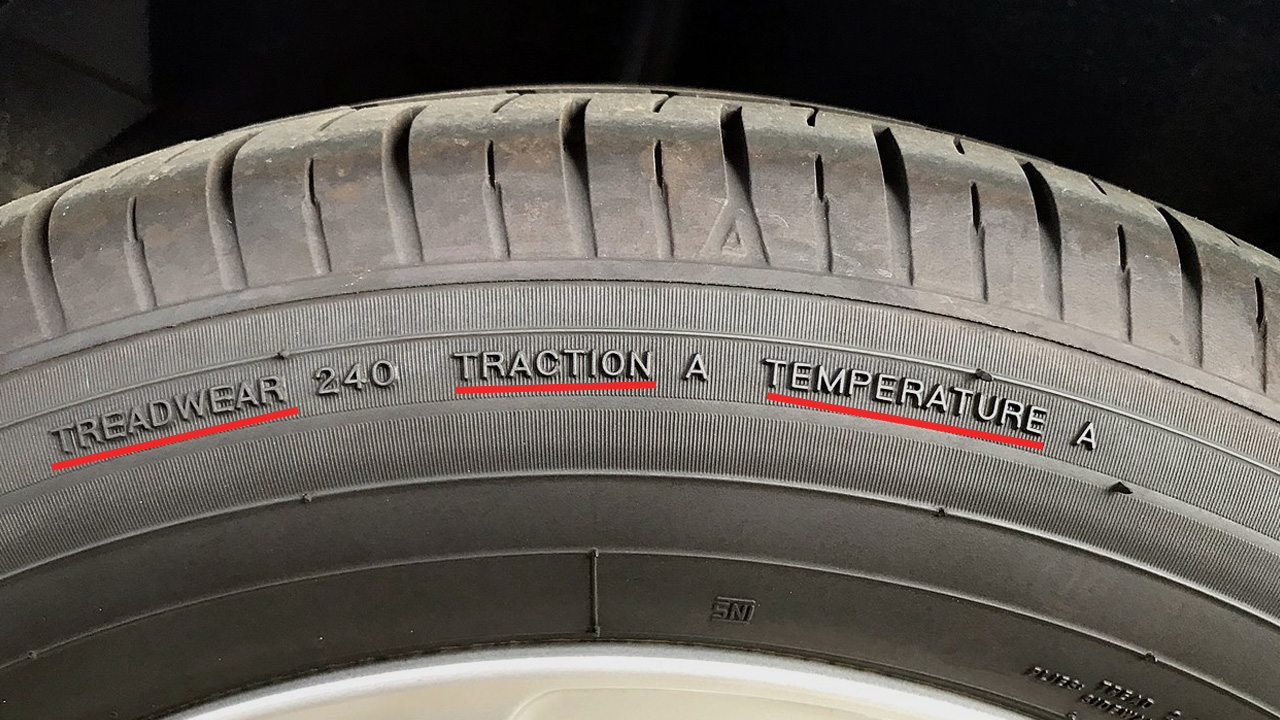
The Uniform Tire Quality Grading also known as the UTQG is a grading system for cars. It ranks the cars according to their capability to handle tractive force, treadwear, weather conditions, and more.
M and S
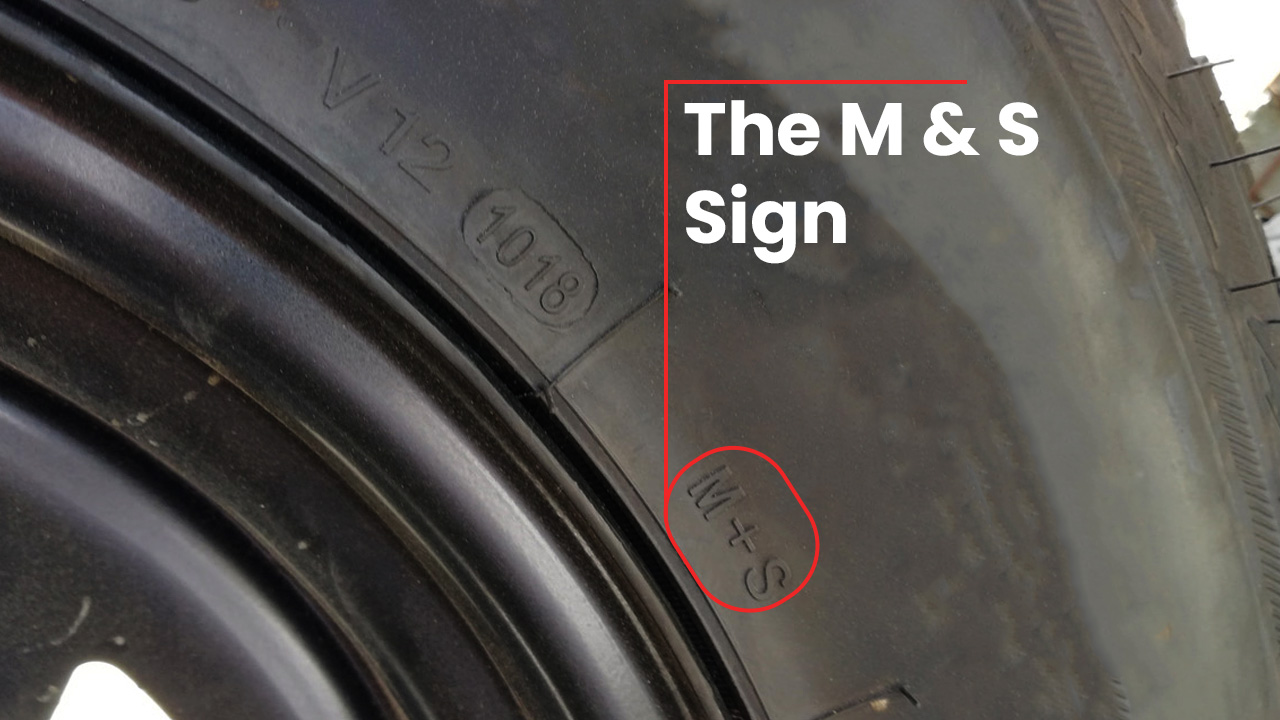
The M and S stand for mud and snow. It means that the M + S tires can perform in snow and mud situations. Such tires are made with stronger material to combat extreme winter and wet challenges.
Conclusion
Now that you know that the scribbling on your tires for a reason. Next time pay attention to them following the tire size guide to know about all the details. You can purchase your next tires independently.
